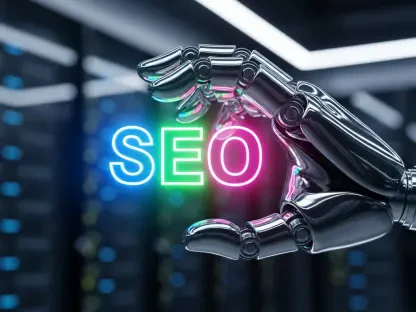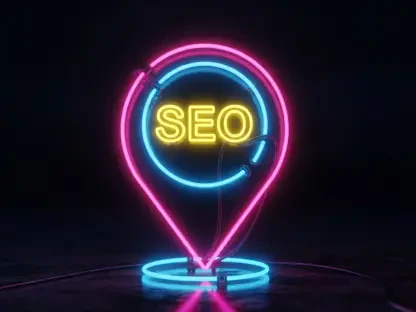The race to be included, cited, and acted on in AI-first search reshaped discovery as synthesized answers, multimodal queries, and conversational journeys pulled attention away from classic link lists and toward sources machines could trust and reuse. Consumers began to ask complex questions into phones, smart speakers, and chat interfaces, and the engines answered with stitched-together summaries, visuals, and next-step prompts that rewarded clarity over verbosity and verifiability over volume.
This report examines how SEO and SEM coevolved to meet that shift. It frames Generative Engine Optimization as the playbook for inclusion in AI answers, outlines the renewed role of E-E-A-T as a shared trust backbone, and details how performance media, technical foundations, and entity-centered strategy together drive measurable outcomes across fragmented surfaces.
The State of Search in 2025: Scope, Players, and Why It Matters
AI-first search described an environment where engines led with synthesized overviews, multimodal results, and conversational refinement, not just ranked lists. Google’s AI Overviews, Gemini, Bing, and a cadre of generative engines such as ChatGPT redefined what it meant to be “visible,” because the answer often appeared before the click, with voice and visual signals shaping intent more than typed keywords.
The ecosystem spanned classic organic search, generative platforms, social-search hybrids, and deep vertical engines in retail, travel, and healthcare. Disciplines expanded in response: technical SEO, entity-based SEO, GEO, content operations, SEM, and analytics formed tighter alignment as ad platforms, analytics suites, data providers, content and CRO tools, and AI infrastructure vendors jockeyed for budget and influence.
Technology set the pace. Large language models, retrieval-augmented generation, multimodal understanding, and structured data raised the ceiling for context resolution, while edge performance and clean architecture buffered volatility. Regulation added guardrails: privacy regimes, transparency and provenance standards, copyright and licensing debates, ad disclosures, and sector rules in healthcare and finance shaped both tactics and measurement.
Strategically, brand visibility shifted from rank to presence: citation in overviews, inclusion in summaries, and actionability inside interfaces. Being quoted with a clear path to conversion mattered as much as holding a traditional position.
Trends, Signals, and the Near-Term Outlook
What’s Changing Now: Forces Reshaping SEO and SEM
Generative answers displaced the “ten blue links” as the default, altering how intent was captured, measured, and monetized. Keyword-only tactics yielded to entity-centric optimization, with knowledge graphs, schema, and internal linking providing the context that models used to select sources.
GEO emerged as a durable approach: concise summaries, fact tables, stats, quotes, and crisp definitions gave models safe, verifiable blocks to reuse. E-E-A-T became the connective tissue across organic and paid, as engines favored identifiable authors, first-hand expertise, expert review, and transparent sourcing, while multimodal growth demanded formats that blended text, images, and video for voice and visual queries.
Fragmentation beyond Google required optimization for Gemini, ChatGPT, and partner surfaces, while performance media adapted creative and landing pages to mirror AI snippets and anticipate follow-up questions. Technical excellence—speed, mobile UX, accessibility, and tidy architecture—served as a hedge against frequent model shifts.
Data, Performance Indicators, and Forecasts Through 2026
Click distribution continued to tilt toward zero-click interactions and assisted conversions, with AI summaries advancing the journey before a website visit. New inclusion metrics—share-of-answer, citation frequency, overview presence, entity coverage, and freshness—provided leading indicators when rank failed to tell the full story.
Growth concentrated in voice and visual query volume, branded citations inside generative results, and schema adoption. Budgets migrated, with SEM exploring AI-adjacent placements and SEO funding structured, entity-rich content and technical upgrades. The forecast pointed to a diversified traffic mix, greater dependence on CRO and first-party data, and steady gains for brands investing in GEO reinforced by E-E-A-T.
Obstacles and Complexities in an AI-First Landscape
Volatility and opacity persisted as engines pushed frequent updates and adjusted answer policies. Measurement expanded beyond rank to multi-surface inclusion, while data integrity challenges—hallucinations and misattribution—kept the focus on verifiable sources and canonical facts.
Scaling content without eroding quality remained difficult. Teams balanced AI-assisted production with editorial rigor, legal review, and governance. Attribution shifted toward multi-touch models that captured cross-surface assists, while entity management demanded aligned topics, schema, and linking to clarify relationships for machines.
Resource trade-offs surfaced. Technical debt, performance drag, and design debt limited snippet readiness. Mitigation strategies emphasized intent-led content maps, structured data governance, canonical fact repositories, and experimentation frameworks that tested copy, schema, and page patterns against inclusion and conversion outcomes.
Rules and Standards Shaping SEO and SEM
Privacy and consent rules reshaped tracking, remarketing, and analytics, pushing teams toward consent-mode friendly UX and durable first-party data. AI transparency, provenance standards, and watermarking expectations encouraged disclosures and content labeling, while copyright and licensing debates clarified how training and summaries could use publisher material.
Advertising standards evolved to cover AI-generated creative and claims substantiation, with YMYL categories facing heightened E-E-A-T thresholds. Security, data minimization, and consent logs improved trust signals and, by extension, inclusion odds. Operational responses focused on compliant analytics, data capture policies, and review workflows that documented expertise and updates.
Where SEO and SEM Are Headed Next
Retrieval-augmented generation, agentic search journeys, multimodal schema, and conversational SERPs formed the next wave. Disruptors surfaced in closed-loop ecosystems, retail media networks, and AI-native discovery channels that blended commerce and content, compressing the path from question to purchase.
Consumers signaled clear preferences: faster direct answers, smooth conversational refinement, and media-rich experiences that felt native to voice and visual interfaces. Growth vectors rewarded GEO-driven inclusion, entity expansion, AI-optimized landing experiences, and vertical playbooks that aligned with category norms and regulatory constraints.
Integration became the blueprint. Unifying SEO, GEO, and SEM around intents, creatives, and landing pages that match AI summaries delivered compounding returns. Macroeconomic factors—ad spend reallocations, privacy-led measurement shifts, platform consolidation, and talent reskilling—favored organizations with shared metrics and flexible workflows.
Conclusion and Strategic Recommendations
The evidence showed that AI restructured discovery while rewarding clear, credible, structured, and verifiable information. The strongest programs unified SEO, GEO, and SEM around entities, E-E-A-T, and measurable intents; produced definitive answers supported by original data and expert commentary; and hardened technical foundations to absorb volatility and win inclusion. Distribution strategies adapted to voice, visual, and generative surfaces, while measurement captured overview presence, citations, and assisted conversions tied to budget and ROI. Governance frameworks codified editorial standards, fact-checking, update cadences, and compliance-by-design.
In practical terms, winning teams piloted GEO on priority topics, fortified speed and mobile UX, deployed schema consistently, paired SEM with snippet-ready landing pages, diversified channels across engines and formats, and institutionalized continuous testing. Taken together, these moves positioned brands to be cited, trusted, and actionable inside AI-first results, and they created a durable path for growth as models, policies, and consumer behavior continued to evolve.









